“I was sipping over my morning tea when my 3-year-old, Navika, woke up and came running to me with her toy in her hand. She hugged me, sat on my lap, and said, ‘Mamma, most babies don’t have many toys to play with. I want to give this toy to them.’ I couldn’t believe my ears at first, but I know she is compassionate, so I thanked her for thinking about the kids and tried to contain my happiness within myself. (I was beaming with pride and my heart was SO FULL.) I told her I was SO PROUD of her for being so kind-hearted, and I thought it would be nice to capture the moment with her toy.
Then I guided her to put the toy in our donation box.
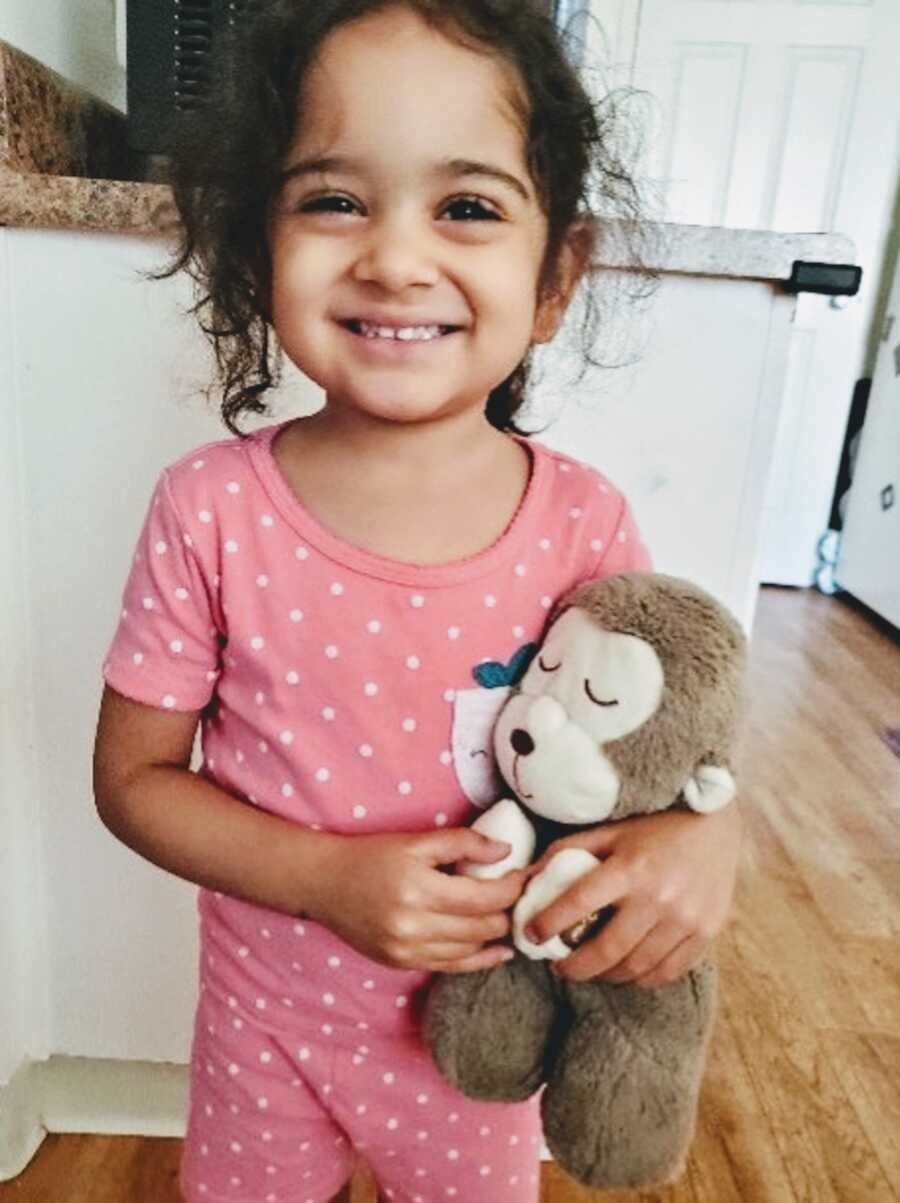
The day was so busy that I just couldn’t find time to share this story with my husband. It was also his birthday, but he was very busy with his office work. Navika and I made a cake for him and this was also why I missed informing him about our daughter’s generosity. Towards the evening, when he was ready to take away the donation stuff, I finally found time to inform him about the situation. Needless to say, he felt SO PROUD. But again, since Navika had offered to donate the toy early in the morning, I just wanted to make sure she really wanted to give it away. What if she has changed her mind? So, both my husband and I went again to confirm if she is sure of giving it away. And she had absolutely NO SECOND THOUGHTS. She was SURE about giving it away, and so, we decided to take a picture of her with the toy for her to look back on.
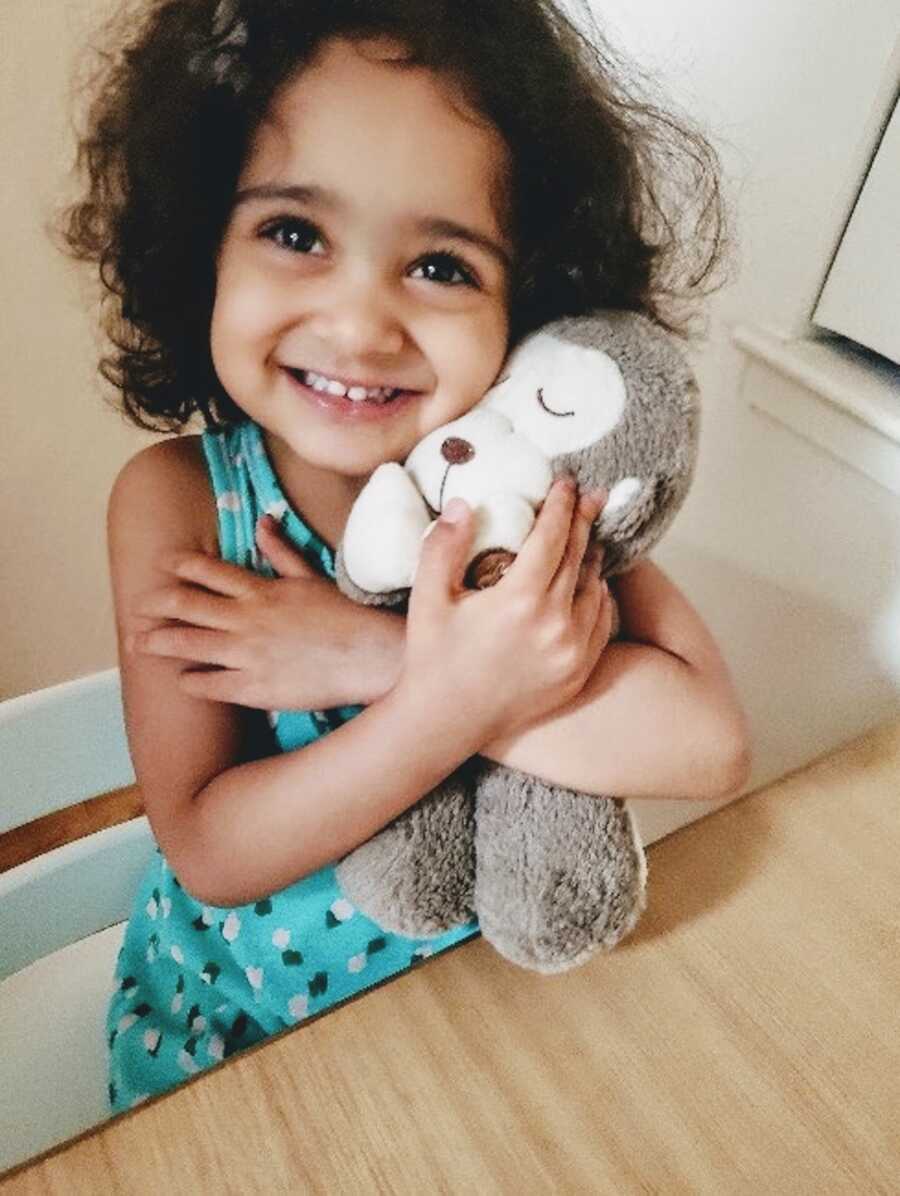
Both my husband and I couldn’t help but discuss this later about how well she received the understanding of giving. We donate our gently-used clothes and her toys and we made sure to involve her every step of the way. I clearly recall our conversation for the first time was something like this:
Me – ‘Oh, you have grown out of this dress, but it is still in good condition. I don’t want to discard it because it can still be worn. I think I am going to donate it.’
Navika – ‘Donate? What’s donate, mamma?’
Me – ‘It means helping others in need. It means if someone needs help and if I can help, then I should.’
Navika – ‘Who needs help, mom?’
Me – ‘Umm, you know we are fortunate for all the dresses and shoes and toys we have, but this is not true for all the kids in the world. It’s a good idea to help them because then they will also have dresses and toys and books. We don’t need these clothes as they don’t fit you anymore. So, we can give them to those who need these clothes. Do you think this will cheer them up?’ (This question is a quote from a book she loves to read).
Navika – ‘Yes, mamma, it will cheer them up!’ She ran to the closet, grabbed a toy, and brought that too, to give it away. (It was an airplane she received as a gift. She was already involved in charity from our very first conversation.)
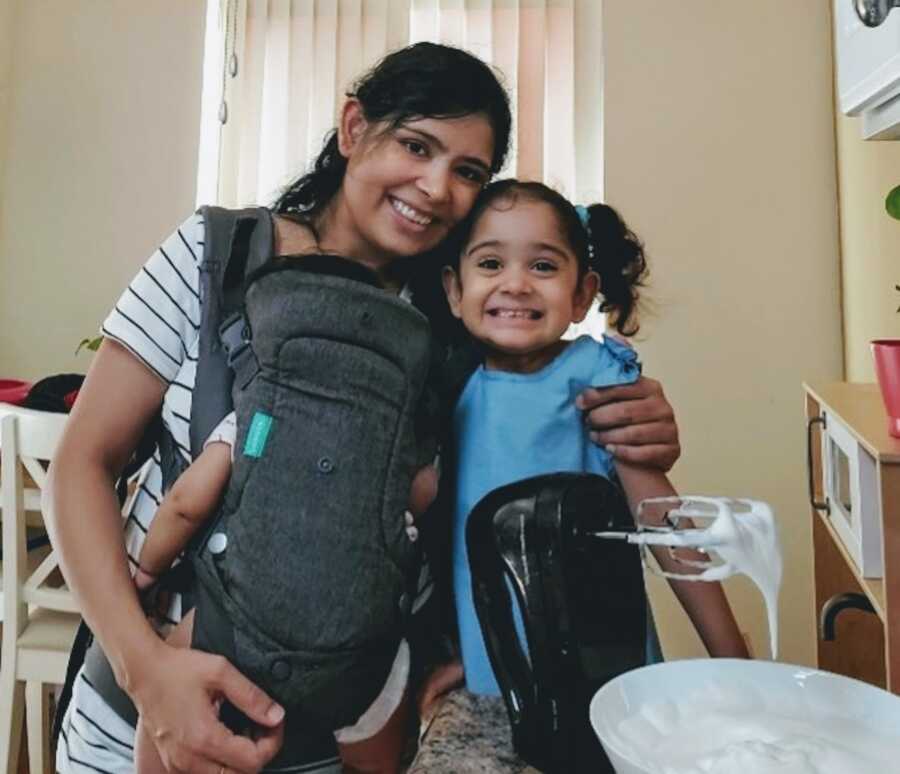
The takeaway from my daughter’s story: every parent wants their child to be generous, but some think it’s a very heavy topic for the kids to understand. I think it is possible to inculcate feelings of kindness and gratitude in young kids. They are very thoughtful and their questions and concerns can put us, adults, into some deep thoughts. It is very common to think children don’t understand or are too little to understand. But if you take time and try to explain them in an age-appropriate way, it is very well possible to get them on the path of generosity.
Start small. Tell them how helping someone can bring a smile to their face. If your child helps you with any household chores, you want to acknowledge their help. If the child has a younger sibling, and the child wants to help in taking care of the baby, then we want to acknowledge that too. There are many such snippets that have happened in our family with Navika and her baby sister where I have expressed my gratitude towards her.
One example I can recall was when the baby was crying constantly. I said, ‘I wonder why is she crying so much. She is fed and her diaper is also changed. I don’t know why is she crying.’ Navika said, ‘Mamma, let’s check her diaper again—maybe she pooped.’ To my surprise, the baby had excreted soon after changing her diaper. I thanked her for her suggestion. It brought calm to everyone in the family. I could see her eyes beaming with pride because she was able to make a valuable contribution to the family.
Even before the baby was born, she would talk about how her baby sister would play with her toys and how she would read her books to the baby, and she does it now that the baby is here.
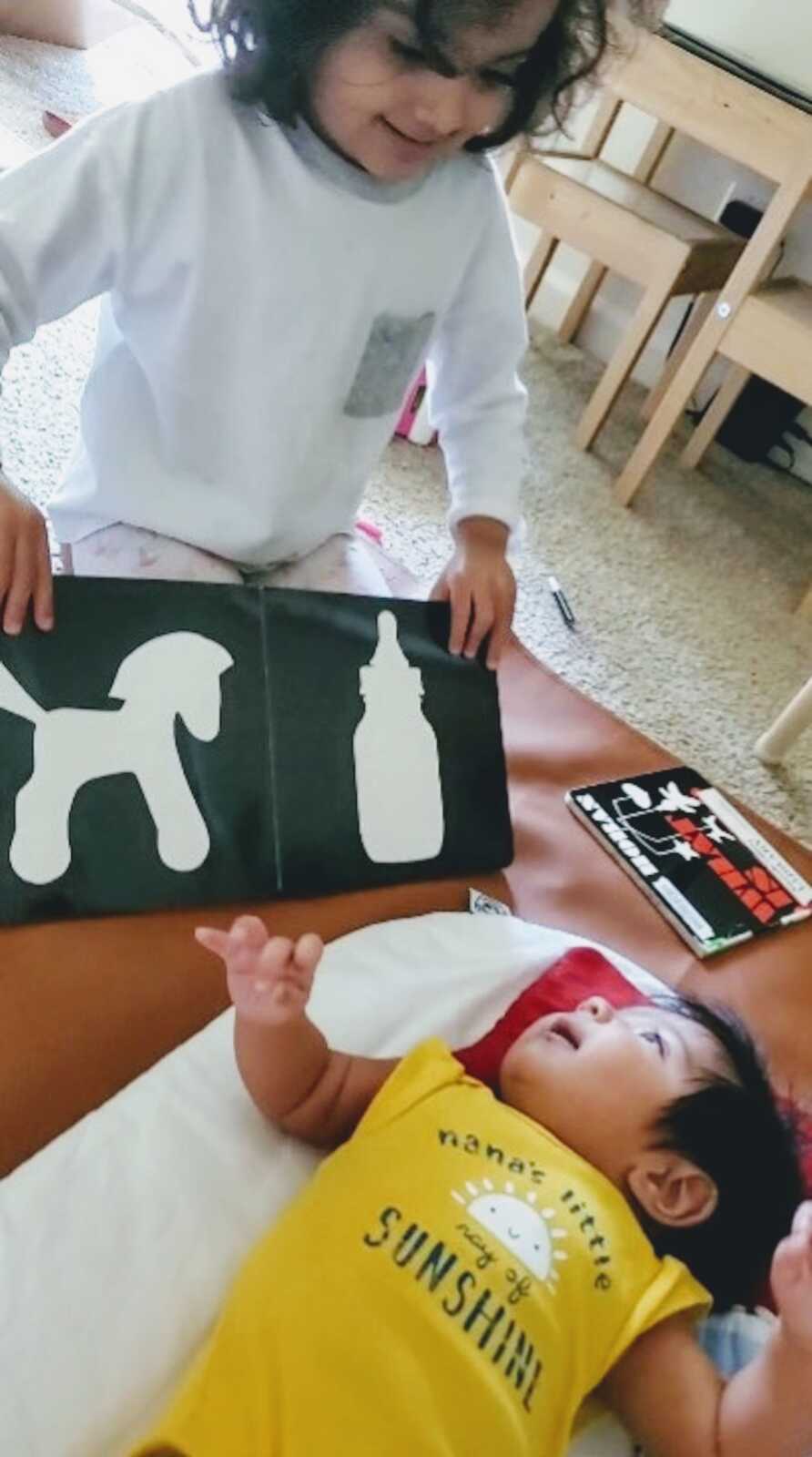
Encourage ‘taking turns.’ We have most often practiced at the playground when Navika is using the swing and another child is waiting to get on it. I tell the other child that we will be done soon and they will get their turn soon. At the same time, I turn to my daughter and let her know another child would like to use the swing. Let’s swing 10 more times and then let the other child have his or her turn. This way, she is also practicing respect for others and of course, patience when the situation is reversed.
Another way of practicing turn-taking is by way of board games. We love playing ‘The Sneaky Snacky Squirrel Game’ for encouraging turn-taking and simultaneously working on social skills.
‘Sharing is caring.’ These three words are very commonly used by parents thinking they are teaching their children to share. But think from the child’s perspective. If the child has a favorite toy, then it is probably not right to force them to share with someone else. Parents normally fall into the trap of saying, ‘You should share. Sharing is caring’. But if the child is not happy doing it, then definitely those words are not helping, right? Now, if I have to think of a similar situation from an adult’s perspective, and you are asked to share something which holds value to you, then you wouldn’t be willing to share yourself. The same thing goes for a child.
When it comes to our daughter, we never told her to ‘share’ because ‘sharing is caring.’ So how do we deal with the situations when we have other kids come over and play with her toys? We plan ahead: we let her know who is visiting us so it’s not a surprise for her. Next, we ask her upfront, ‘Since kids are visiting us, would you like them to play with your toys?’ Her answer has always been an absolute ‘Yes.’ Then, I also ask her if she wants to remove any toy which she doesn’t want anyone to play with. (As a parent, you can sense that if such a toy breaks or gets damaged, then it can have a serious impact on the child. Some toys are dearer than others. Thankfully, we do not have any toys that can break.) She usually responds, ‘Nah! I think they can play with all of my toys.’ I feel my daughter is so generous at sharing her toys that I don’t really need to ‘force’ her to share. My urge to other parents would be to not force their children to share just because ‘sharing is caring.’ They should be able to see the joy sharing brings to the receiver. They should also witness it when the grown-ups in their lives are sharing. Involve them in the process—show them that when you share your ice cream with your child, it brings a smile on the face of the child as well as the parent, because it is such a good feeling.

Sometimes, the child might not be willing to share and that’s okay. Acknowledge the feeling, empathize with them, get down to their eye-level, look into their eyes, and calmly offer possible solutions.
Both my husband and I come from very modest backgrounds. We had our fair share of struggles growing up, and our parents did everything possible to give us decent lives and more than anything, better educations. Now that we are parents ourselves and are doing pretty well in our lives, we want our children to learn to value what we have and be grateful for that. We talk about how there are many little kids like her who are not fortunate like us, so we should try to do something for them because we are capable. I am not sure how much of it she understands, but her act of giving made it clear to me that she definitely feels for these kids.
I still remember the day we bought this toy. She had just turned 6 months then. We were in the Ross store, Denver, Colorado. She was in her stroller, wanting to come out of it and be held. We were strolling her through an aisle, and my husband saw the toy and handed it to her to play with, thinking it would calm her down for some time, clearly without any intention of buying it. When we reached the billing counter, he took the toy back from her and that was the first time ever that she clearly communicated she did not want to part with it. There was a moment of pause, then we immediately decided to get it for her. She has played with the toy ever since.
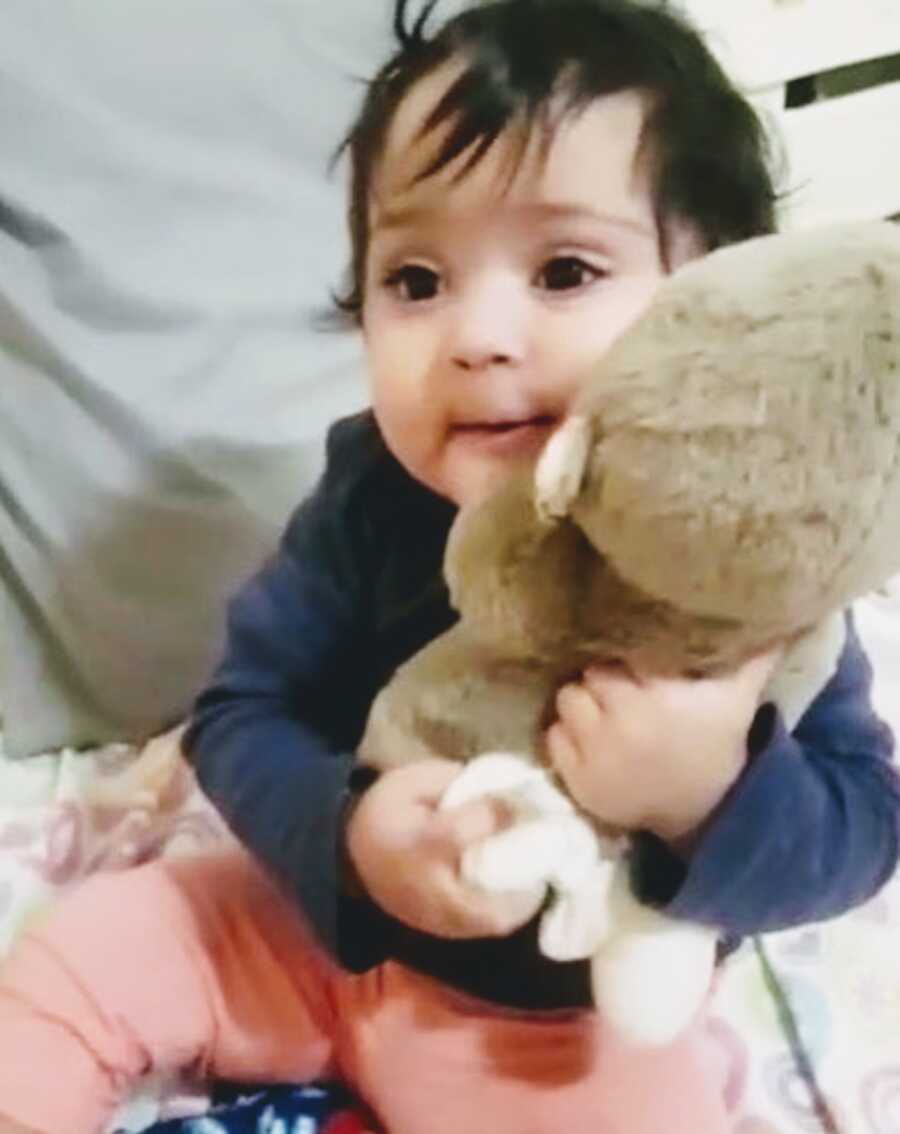
I truly hope my daughter’s story inspires you. At the same time, I also hope I have been able to add some value here by presenting the various facets of our lives and how I think we have been able to inculcate ‘the act of kindness’ and a feeling of gratitude in her. As parents, we will continue to do this for the rest of our lives because it’s a learning experience. However, I would end this by reiterating that we don’t want to force sharing on our kids. We want them to be involved in the process of giving. This will help them to develop empathy and patience. Children love making other kids happy, so when they are able to do it in their own time without being forced, they learn to be kind and generous.
I wish you all lots of happiness on behalf of Our Little Hive.”
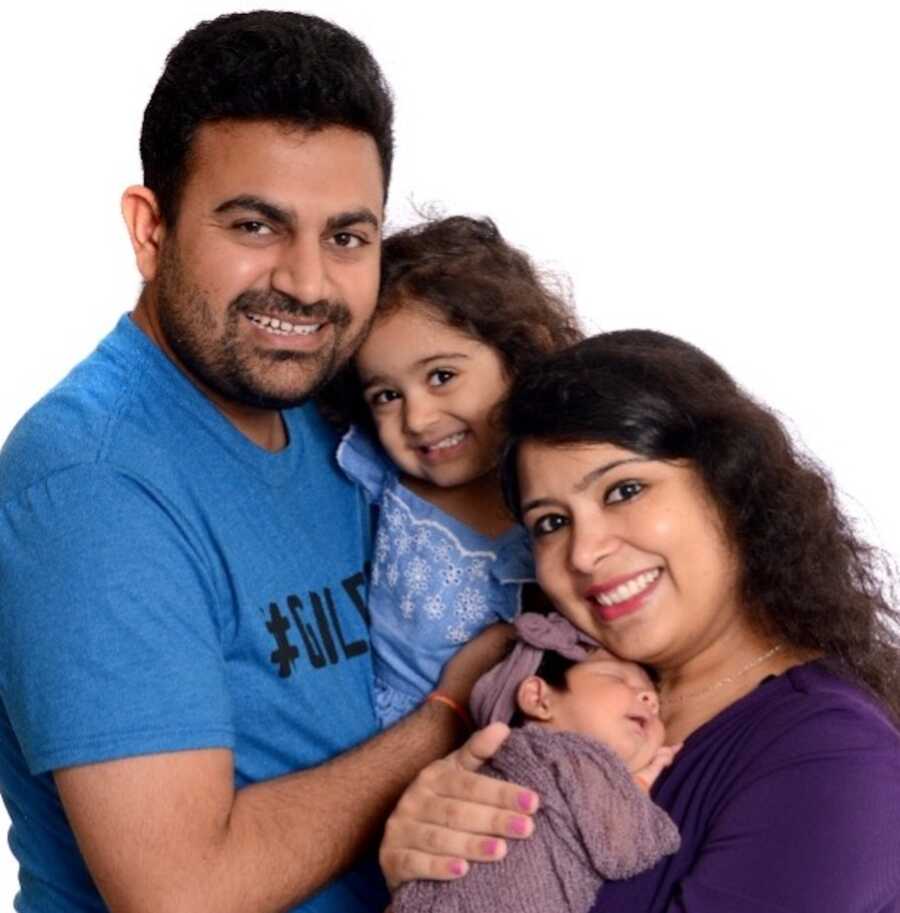
This story was submitted to Love What Matters by Sonika Soni of the San Fransisco Bay Area, California. You can follow her journey on Instagram, Facebook, and Youtube. Submit your own story here, and be sure to subscribe to our free email newsletter for our best stories, and YouTube for our best videos.
Read more beautiful act of kindness stories:




